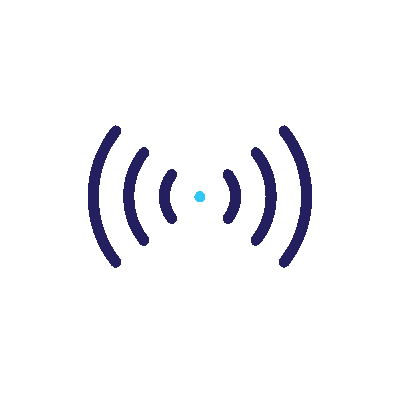
Safe, Secure & Confidential
What Is a Hearing Aid?
Hearing aids are small, battery-powered devices that improve sound clarity for people with varying degrees of hearing loss.
Because of their ability to amplify and clarify sound, hearing aid users can listen, participate, and communicate in a variety of settings where they would otherwise struggle.
Start Free Quote
Because of their ability to amplify and clarify sound, hearing aid users can listen, participate, and communicate in a variety of settings where they would otherwise struggle.
Start Free Quote
Improve Your Hearing With Custom Hearing Aids

Get Your Free Hearing Aid Quote Now!
An estimated 48 million Americans claim to have some degree of hearing loss.
Their social life, relationships, and mental health may all suffer as a result of this.
Fortunately, there are hearing aids out there to help those who need them move into a future with better hearing.
Start Free Quote
How Does a Hearing Aid Work?
Hearing aids come in three main parts:



Do I Need Hearing Aids?

You may need hearing aids if any of the following apply to you:
Some more severe hearing conditions may even require medical attention.
Speech or sound seems muffled
You have trouble hearing in a group, noisy area, on the phone, or if you can’t see who is talking
You often have to ask others to repeat themselves or speak more slowly/clearly
You find yourself listening to the TV or radio on louder volumes than usual
Some more severe hearing conditions may even require medical attention.
OTC Hearing Aids

Over-the-counter hearing aids are hearing aids that you buy directly without having to first visit a hearing professional.
This means that as of October 2022, you will be able to purchase hearing aids directly from vendors in-store or online without the need for a prescription.
If you are under the age of 18 years old, then you will still have to be seen by and prescribed hearing aids by a medical professional.
This means that as of October 2022, you will be able to purchase hearing aids directly from vendors in-store or online without the need for a prescription.
If you are under the age of 18 years old, then you will still have to be seen by and prescribed hearing aids by a medical professional.
Types of Hearing Aids
Modern hearing aids come in all different shapes, sizes, and styles, each with its own features and advantages.
Picking the right hearing aid for you is an important choice.
If it doesn't work the way you need it to or you don't like the way it looks or feels, you've wasted your time and money and are back to square one.
Below is an overview of some of the different types of hearing aids available and what to expect from them.
Picking the right hearing aid for you is an important choice.
If it doesn't work the way you need it to or you don't like the way it looks or feels, you've wasted your time and money and are back to square one.
Below is an overview of some of the different types of hearing aids available and what to expect from them.

Completely-in-the-Canal (CIC) Hearing Aids
Can help with: Mild to moderate hearing loss in adults
CIC hearing aids are molded to fit deeply inside the ear canal and are the smallest and most discrete models on the market.
Although being discreet is a benefit of their small size, this usually means they can't fit as many features, like volume control.
If you suffer from dexterity issues, then they may be difficult to handle, and you may wish to choose a larger-sized hearing aid.
| Advantages | Disadvantages |
|---|---|
 Very discrete Very discrete |
 Shorter battery life compared to larger models Shorter battery life compared to larger models |
 Less likely to pick up wind noise Less likely to pick up wind noise |
 Size will mean fewer features like a volume control Size will mean fewer features like a volume control |
 Because they sit deep in the ear canal, sound quality is good Because they sit deep in the ear canal, sound quality is good |
 Smaller size can limit its wireless connectivity abilities Smaller size can limit its wireless connectivity abilities |
 Speaker is susceptible to clogging from ear wax Speaker is susceptible to clogging from ear wax |

In-the-Canal (ITC) Hearing Aids
Can help with: Mild to moderate hearing loss in adults
ITC hearing aids are custom molded to your ear and fit partly in the ear canal.
Because they are a little bit bigger than CIC hearing aids, they can house more features while still being discreet.
Their size doesn’t make them the most suitable if you have dexterity issues, as the volume control may be difficult to adjust.
| Advantages | Disadvantages |
|---|---|
 Discrete Discrete |
 Shorter battery life compared to larger models and will require changing Shorter battery life compared to larger models and will require changing |
 Longer battery life than CIC hearing aids Longer battery life than CIC hearing aids |
 Smaller size can limit its wireless connectivity abilities Smaller size can limit its wireless connectivity abilities |
 Extra features not found on CIC models Extra features not found on CIC models |
 Can leave you feeling plugged up Can leave you feeling plugged up |
 Speaker is susceptible to clogging from ear wax Speaker is susceptible to clogging from ear wax |

In-the-Ear (ITE) Hearing Aids
Can help with: Mild to severe hearing loss
ITE hearing aids are custom made in two styles.
Full shell - Fills most of the bowl-shaped area of your outer ear
Half shell - Only fills the lower part of your ear
The largest in-ear, custom models of hearing aids are called full shell ITEs, and as a result, they have more sound amplification.
Even though they are bigger, they are still relatively small, so if you have dexterity problems, they might not be the best for you.
| Advantages | Disadvantages |
|---|---|
 More features than other models More features than other models |
 May pick up more wind noise May pick up more wind noise |
 Longer battery life Longer battery life |
 Less discrete than smaller models Less discrete than smaller models |
 Easier to handle than smaller models Easier to handle than smaller models |
 Speaker is susceptible to clogging from ear wax Speaker is susceptible to clogging from ear wax |

Behind-the-Ear (BTE) Hearing Aids
Can help with: Any type of hearing loss
BTE hearing aids are the style that most likely comes to mind when somebody mentions hearing aids.
The custom earpiece that fits into your ear canal is connected to the hearing aid by a tube that hooks over the top and rests behind the ear.
Although they are typically larger, making them better suited for people with dexterity issues, more discrete models have recently been introduced.
Their size also makes it possible to add extra features like stronger amplification and directional microphones, which can help you hear more clearly in crowded places.
| Advantages | Disadvantages |
|---|---|
 More features than other models such as directional microphones More features than other models such as directional microphones |
 Traditionally larger and less discrete Traditionally larger and less discrete |
 May come with rechargeable batteries May come with rechargeable batteries |
 May pick up more wind noise May pick up more wind noise |
 Capable of increased amplification Capable of increased amplification |

Reciever-in-Ear (RIE) Hearing Aids
Can help with: Mild to moderately severe hearing loss
Also known as a "receiver-in-the-canal" hearing aid, the speaker sits in the ear canal and uses a wire to connect to the microphone and processor, which rest behind the ear.
Because these are similar to BTE hearing aids, they benefit from the ability to house directional microphones.
A key difference between the two is that because RIE hearing aids connect via a wire and not a tube, the speaker can be replaced separately.
| Advantages | Disadvantages |
|---|---|
 More features than other models such as directional microphones More features than other models such as directional microphones |
 Traditionally larger and less discrete Traditionally larger and less discrete |
 May come with rechargeable batteries May come with rechargeable batteries |
 May pick up more wind noise May pick up more wind noise |
 Capable of increased amplification Capable of increased amplification |

Open Fit Hearing Aids
Can help with: Better lower frequency & mild to moderate, high-frequency hearing loss
Open-fit hearing aids keep the ear canal very open, which allows low-frequency sounds to enter naturally and high-frequency sounds to be amplified by the device.
| Advantages | Disadvantages |
|---|---|
 Doesn’t plug the ear like other models might Doesn’t plug the ear like other models might |
 Often visible Often visible |
 May come with rechargeable batteries May come with rechargeable batteries |
 Might be difficult to insert Might be difficult to insert |
Additional Features
Depending on the type of hearing aid you choose, it may come with some of these additional features.








How Much Do Hearing Aids Cost?
Depending on a number of factors, hearing aid prices can vary, but they can reach over $4000 per device.
If you have insurance, you might be able to negotiate a lower price, but often only for hearing aids for children.
Some providers may offer deals on buying multiple hearing aids, which could save you money in the long run.
Start Free Quote
If you have insurance, you might be able to negotiate a lower price, but often only for hearing aids for children.
Some providers may offer deals on buying multiple hearing aids, which could save you money in the long run.
Start Free Quote

How to Get Hearing Aids

We understand that when it comes to hearing aids, what works for one person, might not work for you.
That’s why we at Hear Perfect tailor all of our hearing aid quotes specifically to you and your needs.
All you have to do is answer a few quick questions, and we will provide you with a bespoke, no-obligation quote, totally free of charge.
Start Free Quote
That’s why we at Hear Perfect tailor all of our hearing aid quotes specifically to you and your needs.
All you have to do is answer a few quick questions, and we will provide you with a bespoke, no-obligation quote, totally free of charge.
Start Free Quote













